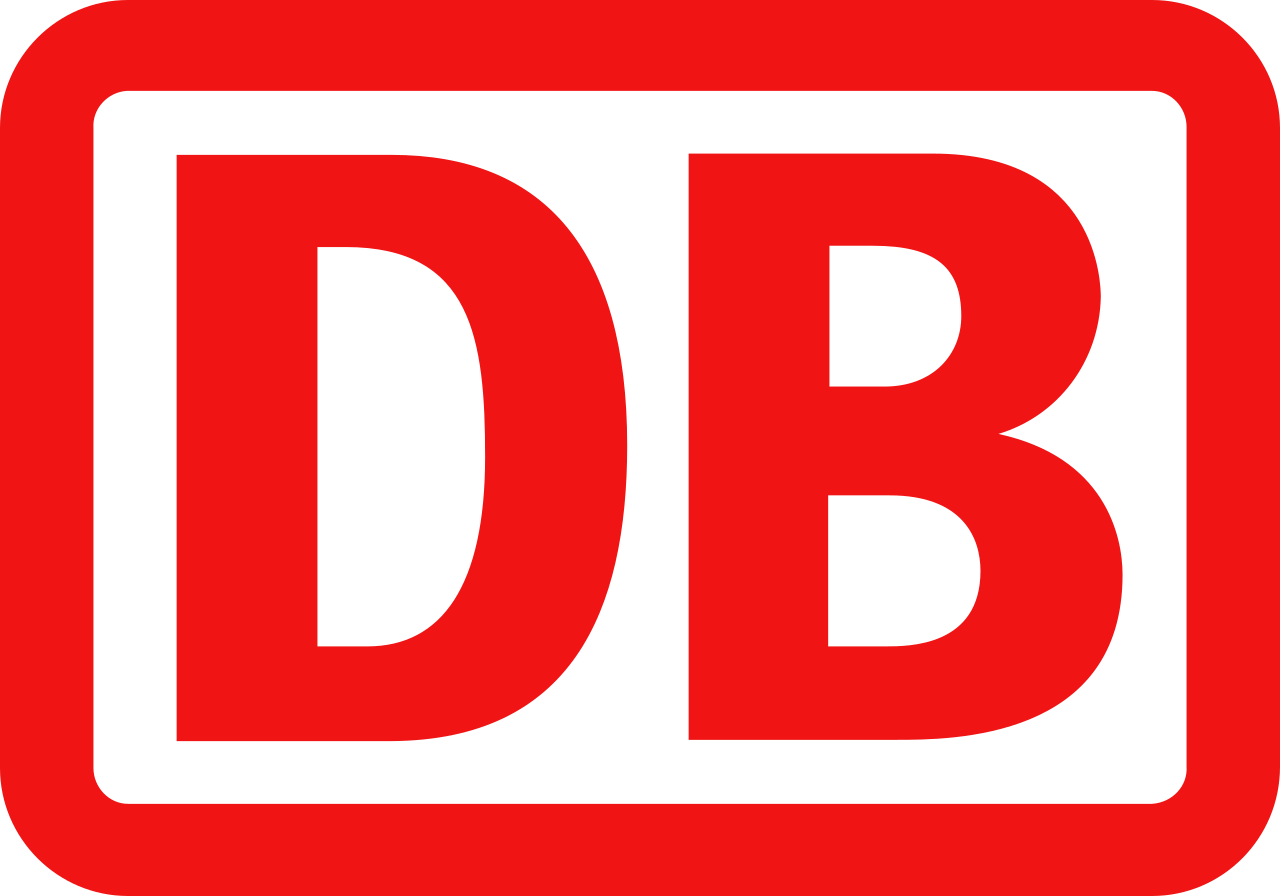
You can buy train tickets directly from the operator or through a reseller. The reseller is typically slightly more expensive (3-5%) but can provide an easier booking experience, especially if you travel with more than one operator.


These operators provide a complete journey either as a direct connection or through their partners. Even if a change of trains is involved, it’s all part of a single itinerary managed by the same train company or its partners, offering a smoother and more coordinated travel experience.



Some operators don’t run direct trains the whole way, but they serve either the departure or arrival station. In many cases, you can combine two of these operators to complete your journey by changing trains along the way. This is often a flexible and budget-friendly way to travel — especially if you’re comfortable piecing together your own itinerary.
Just keep in mind that these are separate journeys, which means a delay on the first leg could cause you to miss the second without automatic compensation or rebooking. It’s a great option for confident travelers who don’t mind a bit of extra planning.




SNCF, the national railway company of France, operates high-speed TGV trains that connect Barcelona and Paris. The TGV trains are renowned for their speed, comfort, and frequency. They offer amenities such as spacious seating, free Wi-Fi, power outlets, and a bar buffet car with refreshments and meals. First-class passengers enjoy additional services like wider seats and more legroom. SNCF is known for its robust customer service, providing assistance at stations, online support, and a mobile app for reservations and travel information.
FlixBus, primarily a long-distance bus service, also operates a rail service called FlixTrain in some countries, but it is not a primary operator for trains between Barcelona and Paris. However, if travelers find FlixTrain options, they would experience budget-friendly train services with basic amenities. The focus of FlixBus and FlixTrain is on low-cost travel, so amenities are typically minimal, prioritizing affordability.
Ouigo is a low-cost subsidiary of SNCF, offering high-speed train services with competitive pricing. Ouigo trains feature a simpler, no-frills service model to keep fares low. While they maintain the speed and efficiency of standard TGV trains, amenities are limited. There might be fewer options for refreshments and more basic seating arrangements. Ouigo’s booking process is streamlined, often requiring online ticket purchase, and their customer support is geared towards digital interaction, offering online assistance and mobile services for convenience.
For a first-time traveler, it’s essential to consider the type of travel experience desired, whether it’s the full-service comfort of SNCF, the affordability of FlixBus, or the budget-friendly high-speed options of Ouigo. Each operator has different booking systems, support channels, and onboard offerings, which should be reviewed when planning a trip from Barcelona to Paris.
When traveling by train from Barcelona to Paris, the Interrail Global Pass is valid for residents of Europe, including trips that cross national borders, such as between Spain and France. The Interrail One Country Pass would not be applicable for this journey as it covers only domestic travel within a single country, and thus would not cover an international trip from Spain to France. For non-European residents, the Eurail Pass would be valid for this journey, as it allows for travel across multiple European countries including Spain and France.
Upon arriving in Paris by train, you have several options for getting around the city using local transportation. The Paris Métro is one of the most efficient and widely used methods, featuring 16 lines that cover the city extensively, with each line distinguished by numbers and colors. Tickets can be purchased at machines in stations, and it’s advisable to pick up a Métro map or download a public transportation app for ease of navigation. Besides the Métro, the RER (Réseau Express Régional) trains are helpful for reaching suburbs and certain destinations like Charles de Gaulle Airport, Disneyland Paris, and Versailles.
The city also has an extensive bus network, which offers a scenic way to travel above ground. Buses operate throughout Paris and its suburbs, with maps available at stops and online. For a similar above-ground experience, the tram system includes several lines primarily serving the outskirts of the city, offering an efficient mode of travel, particularly for shorter distances.
If you prefer personalized transport, taxis are readily available and can be hailed on the street, found at taxi stands, or booked through apps. Be sure to look for official taxis that have lighted signs and meters to ensure a fair price. Alternatively, ridesharing services like Uber operate throughout Paris, providing another convenient option to travel directly to your destination.
Bicycles and e-scooters are also popular in Paris. The city’s bike-sharing system, Vélib’, offers both traditional and e-bikes with stations scattered across the city. Additionally, several companies offer e-scooter rentals, available through their respective apps, for those who prefer a more agile and environmentally friendly transport option.
Paris is a central hub in the European train network, offering robust connections both domestically within France and internationally. Domestically, the TGV (Train à Grande Vitesse) provides high-speed services from Paris to major cities such as Marseille, Lyon, Bordeaux, Strasbourg, and Lille. The Paris to Marseille route takes just over three hours and is popular for its scenic views of the French countryside. The Paris to Bordeaux route is another favorite, traveling southwest and reaching Bordeaux in about two hours. To the east, trains to Strasbourg cover the journey in under two hours, showcasing the efficiency of France’s rail network.
Internationally, Paris offers a range of connections across Europe. To the north, the Eurostar connects Paris to London in approximately two hours and fifteen minutes via the Channel Tunnel, making it one of the most traveled international routes. Thalys trains provide regular services from Paris to Brussels, Amsterdam, and Cologne, with the journey to Brussels being particularly quick at just under ninety minutes. The Lyria service connects Paris to several Swiss cities, including Geneva, Lausanne, and Zurich, with the trip to Zurich taking about four hours. Travelers can also access Spanish destinations like Barcelona via the TGV, which completes the journey in about six and a half hours. These efficient connections make train travel from Paris a preferred choice for many looking to explore Europe.
The best times to visit Paris are typically in the spring, from April to June, and in the fall, from September to October. During these months, the weather is pleasantly mild, making it perfect for exploring the city on foot or enjoying outdoor café culture. Spring offers blooming flowers, while fall provides a delightful crispness in the air and beautiful autumn foliage. Prices for accommodation and travel can be lower compared to the peak summer tourist season, providing better value for travelers.
In terms of activities and festivals, spring brings cultural events like the Paris Marathon and the French Open. The fall is equally lively with events such as Nuit Blanche, a night-long arts festival, and the Montmartre Grape Harvest Festival. Arriving by train during these periods can be convenient as crowds are thinner than in the summer, ensuring a more relaxed experience at popular attractions. It is worth noting that winter months, especially December with the holiday season, can be magical with Christmas markets and festivities, though weather can be quite chilly.
When traveling from Barcelona to Paris by train, it is important to pack several essential items. Make sure to bring your passport or national ID card if you are an EU citizen, as these are legally required for travel between Spain and France. Pack your tickets or have a digital copy on your mobile device. Consider comfort items for the train ride, such as a neck pillow, an eye mask, and earplugs or noise-canceling headphones. You’ll want snacks and a reusable water bottle that you can fill up after security. Bring a power adapter specific for France if your devices do not accommodate the European plug (Type C or E). Keep your phone, tablet, or e-reader’s charging cable handy. A portable charger can also be convenient. Dress in layers for fluctuating temperatures on the train. A small first aid kit might come in handy. Don’t forget personal hygiene items like hand sanitizer and tissues. If you plan to explore in any weather, pack a collapsible umbrella and comfortable walking shoes. Lastly, have local currency or a credit card ready for expenses both on the train and in Paris.